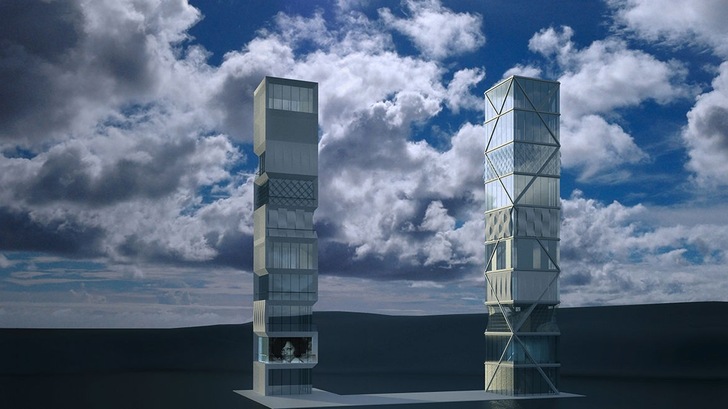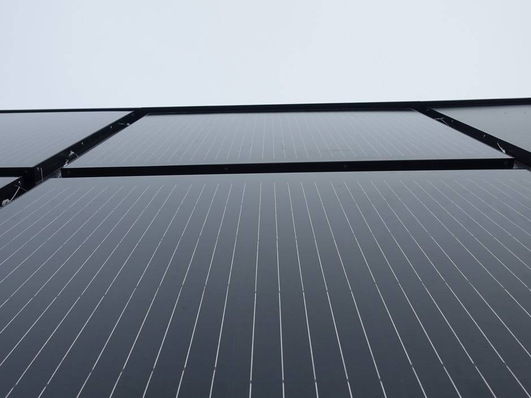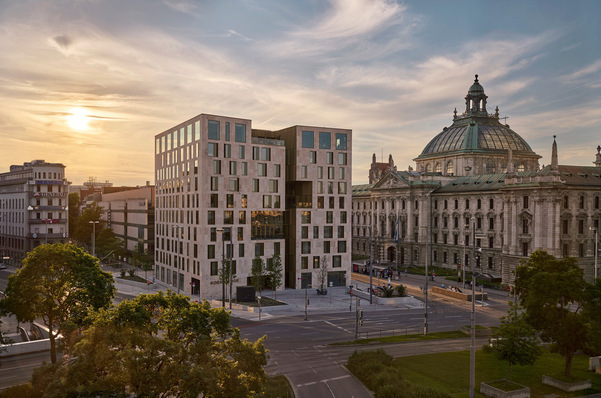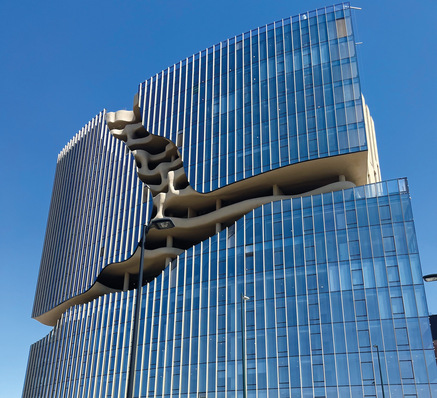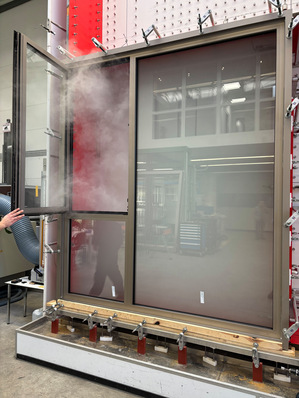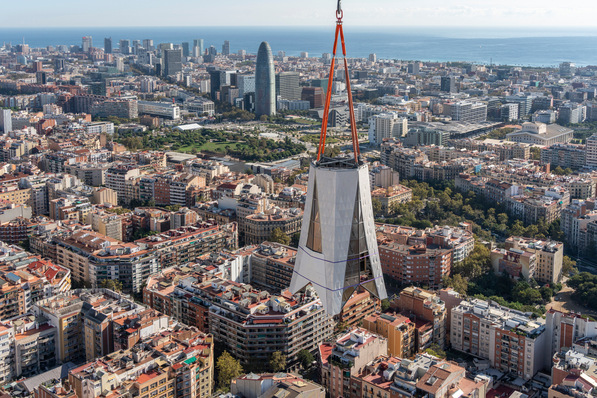Optimised for any climate and for changing external conditions, this is what adaptive facades represent, because they have one thing in common: They adapt to climatic conditions or external influences in a highly flexible and seamless manner. In the following article, we will look at how this can be achieved.
What are adaptive facades?
Due to increasing market requirements, the performance of the building envelope can and must become significantly better than it is today. The adaptive facade of tomorrow is multifunctional, smart and self-controlling. It is also an active and self-learning and self-optimising system.
The concepts for adaptive facades today range from dynamic glazing (with variable g-value) and sun shading systems to photovoltaic integration and noise-absorbing as well as self-cleaning facade materials.
Definition: An adaptive facade is able to react autonomously to changes in environmental conditions in order to achieve optimal performance in terms of technical requirements and user comfort. At the same time, adaptive facades are able to help reduce operation costs to a minimum.
Another long-term goal of facade manufacturers and developers must be to create new building envelopes that are also self-sufficient in terms of energy by generating their own electricity, for example through integrated solar cells. Adaptive facades adapt, among other things, to changing outside temperatures as well as to changes in solar radiation (sun shading and glare protection). At the same time, they allow an optimised inflow of natural daylight. In order to achieve an optimum, such smart facades are integrated into the building management system.
Requirements for adaptive facades:
- Dynamic solar shading to avoid thermal loads
- Dynamic glare protection, depending on the intensity of the solar radiation
- Sufficient daylight input to optimally illuminate rooms
- Use of light control systems for directing light to indoor spaces
- Energy generation, i.e. use of sunlight in winter
- Power generation (energy self-sufficiency, building-integrated PV)
- Ventilation functionality (automated if possible)
Smart glass for adaptive facades
Adaptive glazing plays an important part in the performance of adaptive facades. A distinction can be made between active (switchable) facade glass and passive (reactive) systems.
The passive mode of action is used, for example, with phototropic, thermotropic or thermochromic glass variants. The active mode of action has so far been achieved by electrochromic, gasochromic systems as well as glazing based on polymer-dispersed liquid crystals (PDLC) or suspended particle devices (SPD). The most state-of-the-art variant is adaptive glass based on liquid crystal-based LCW technologies.
Electrochromic glass
In the past, switchable glass was mainly available on the market as electrochromic layer systems (EC systems). Electrochromics refers to the reversible change in colour or transmission of a material as a result of an electrochemical reaction.
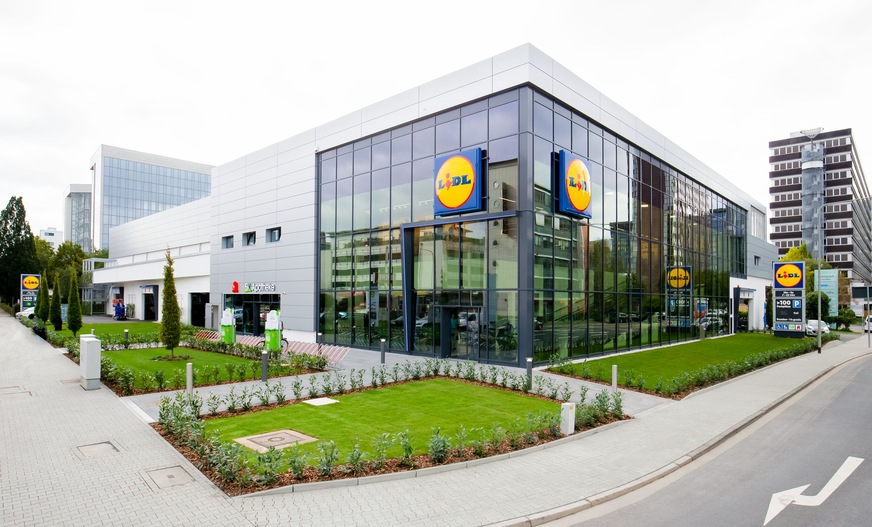
Lidl
Read also: SageGlass for more than 90 Lidl shop facades
Electrochromic glass changes its absorption, transmission and reflection properties when a DC voltage is applied. The transmission in the visible and near-infrared spectrum is partly reduced by the increased absorption - which is a disadvantage.
Today, electrochromic glass is durable and reliable and can retain its colour over the entire service life and has an equally high switching range. There are now very easy-to-use control systems, and the electricity demand is around two watts per square metre.
Well-known manufacturers of EC glass are: Sage Glass/Saint-Gobain, View Dynamic Glass Inc. (USA), EControl from Plauen in Germany and AGC Glass Europe/Kinestral Technologies Inc. (under the brand name Halio).
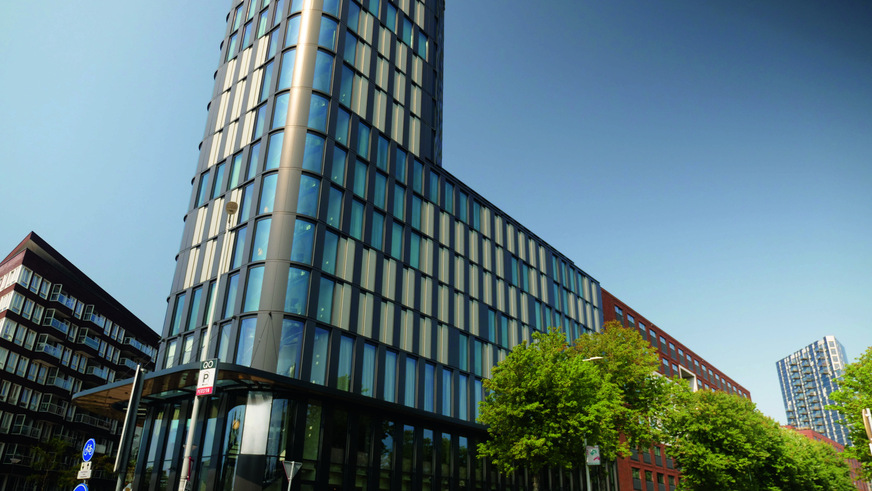
Hueck
Read also: A sustainable hotel facade for Amsterdam from Hueck
Reasons why the use of electrochromic glass in the market is not as widespread as it could be include limited widths of up to a maximum of 1.60 metres, a colour gradient due to a drop in voltage and the availability of only blue or grey as glass colours. In addition, depending on the conditions, the switching times can sometimes be longer: from approximately three to 20 minutes. The glass suppliers Sage, View and Halio can switch to a TL 1 per cent state. This leads to higher glare protection, but also to significant colour shifts.
The range of design options for EC glass is usually limited. EControl offers the greatest scope, up to and including circular panes. Currently, the manufacturer EControl also supplies laminated safety glass as a final product, which allows further processing into insulating glass. The costs of the electrochromic systems are generally over 600 euros per square metre, including the control unit.
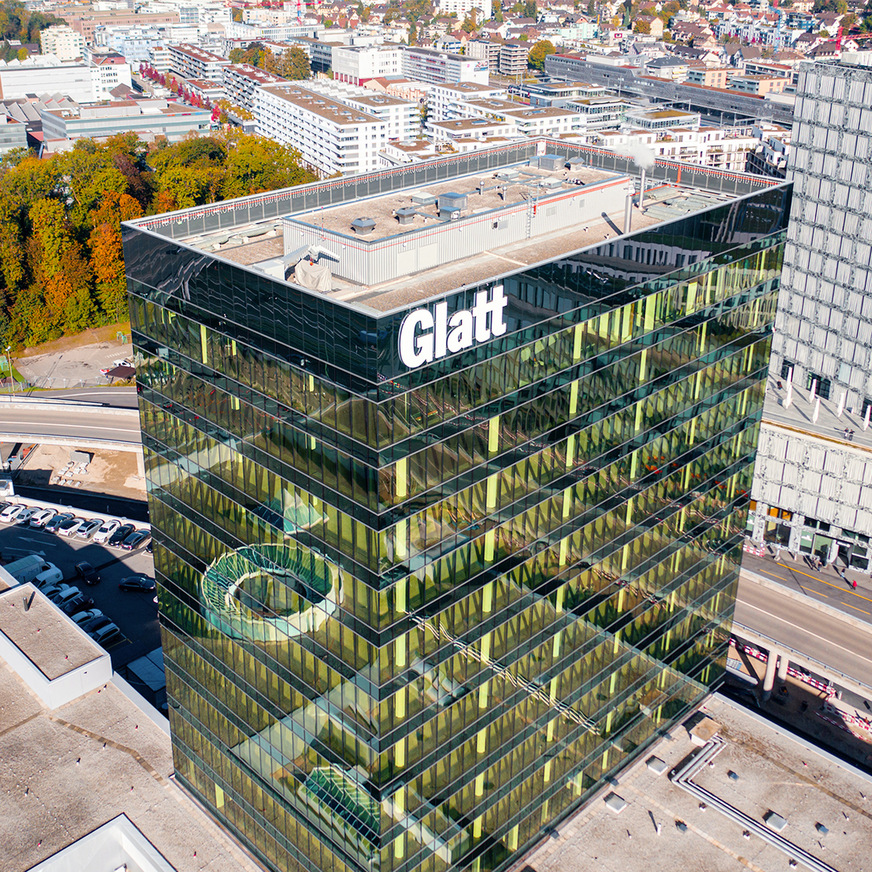
Glatt
Read also: Facade renovation is better with smart glass
Switchable PDLC interlayers
Switchable PDLC interlayers are based on a polymer liquid crystal films embedded between two glass panes. It is referred to as privacy glass. Switchable PDLC films function as privacy screens (e.g. for meeting rooms), but not as solar shading due to the excessive absorption. PDLC glass is not suitable for outdoor use due to cloudy views it creates. Because there are many suppliers of PDLC interlayers, quality and prices can vary widely.
This is how the system works: Inside the polymer are randomly oriented liquid crystal molecules that scatter the incident light – the pane is opaque. When a voltage is applied, the liquid crystal molecules are all oriented in the same direction and the glass becomes transparent.
Glass based on liquid crystals
Recently, the German manufacturer and market leader in liquid crystal, Merck has started offering switchable glass, which is now on the market under the brand name eyrise. The licrivision liquid crystals used are dye-doped LC mixtures that are used in switchable glass. eyrise glass is now offered as solar control and privacy systems for facades as well as interior applications (privacy).
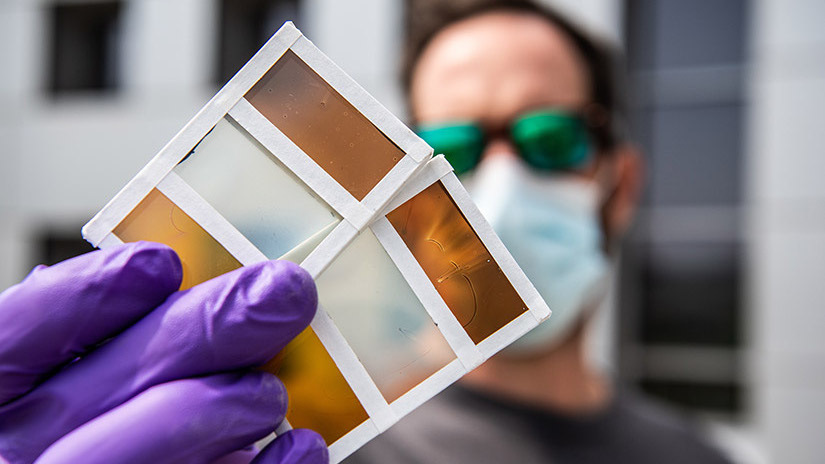
Dennis Schroeder/NREL
Read also: A new glass for adaptive facades
For the privacy variants, eyrise glass uses cholesteric LC mixtures that switch from opaque to transparent without a time delay and have almost no scatter/haze, making them suitable for facades. By applying a relatively low AC voltage to the LC cell, the components of the liquid crystal mixture regulate the transmittance of the eyrise glass in seconds and control the intensity of light, haze, glare and transparency.
LC-based eyrise glass allows almost any colour scheme for the exterior and can currently be manufactured in dimensions up to 1.60 by 3.50 metres and can be used at temperatures ranging from - 40 °C to 120 °C, while the g-values can still be optimised. Manufacturer Merck has established industrial production facilities in Eindhoven, The Netherlands, where the eyrise glass is manufactured.
Daylight an increasingly important factor
According to the latest research, for future facade constructions, daylight requirements will matter more and more. The use of sunlight and daylight (48 per cent of solar energy) is becoming more important. The aim is to ensure minimal heating in summer and at the same time greater brightness and better illumination of indoor spaces through light control. Glare has to be avoided selectively.
Taking the biological effects of light, including the sleep-wake cycle, hormone and vitamin D production etc. into account, is an important additional task. As is the reduction of energy usage for electrical lighting (equivalent to 19 per cent of global electricity consumption). The situation is made more difficult by the fact that the time of year, time of day and user habits make highly variable demands. The latter are taken into account far too little because they are not recorded.
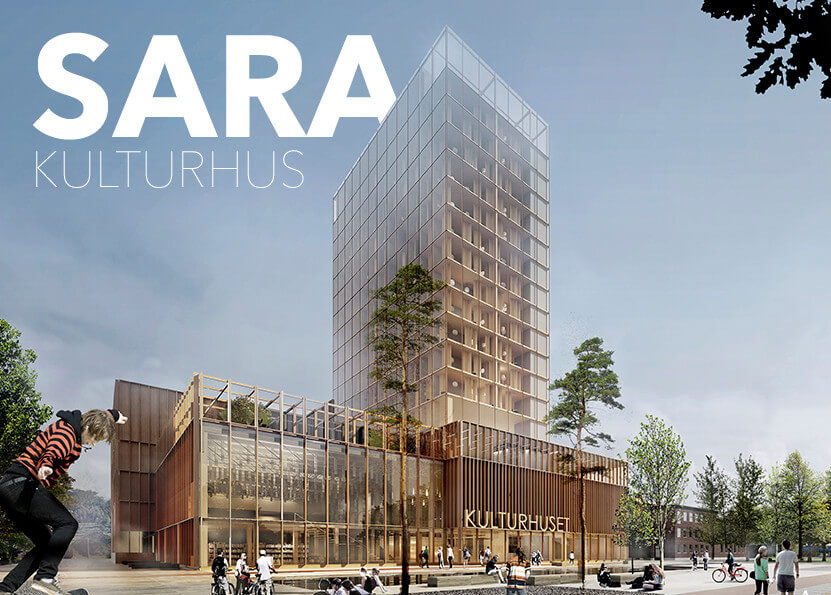
Aluprof
Read also: Building trends for more sustainability
Smart solutions require participatory collaboration and research. Until now, there has been no holistic approach in the trade-oriented building industry. Therefore, development has largely been limited to individual components, which did not add up to an optimum solution. In addition, there was a lack of suitable control systems that recorded and took into account user needs and environmental conditions.
This is what facade glass will have to achieve in the future
In order to optimally balance energy efficiency, glare protection, daylight supply and indoor climate, switchable glass for daylight control in buildings will play a leading role in the overall context of ‘adaptive facades’ and ‘smart buildings’. Furthermore, switchable smart glass makes mechanical shading components obsolete.
Future facade glass will bring about an overall optimum, taking account of location, size and orientation, of the season and time of day as well as of the weather and the manner and purpose in which a facade or glass product is used. Future facades will be optimised for user comfort and overall health through self-learning and self-controlling systems.
The optimal solution is a transparent building component whose properties can be variably adapted: for every climate, for different users and for the most diverse construction shapes and orientations – sensor-controlled and responsive as well as self-learning. The concrete development needs of active systems include lowering product costs through technology and material development, the use of thin glass, the production of larger formats, the neutral view or different colours, the improvement of the selectivity index TL/TE and increased solar control (g-value).
This calls for systems for different climate zones and applications as well as a new concept of control and communication, not only the integration into building control systems, especially the recording of user comfort.
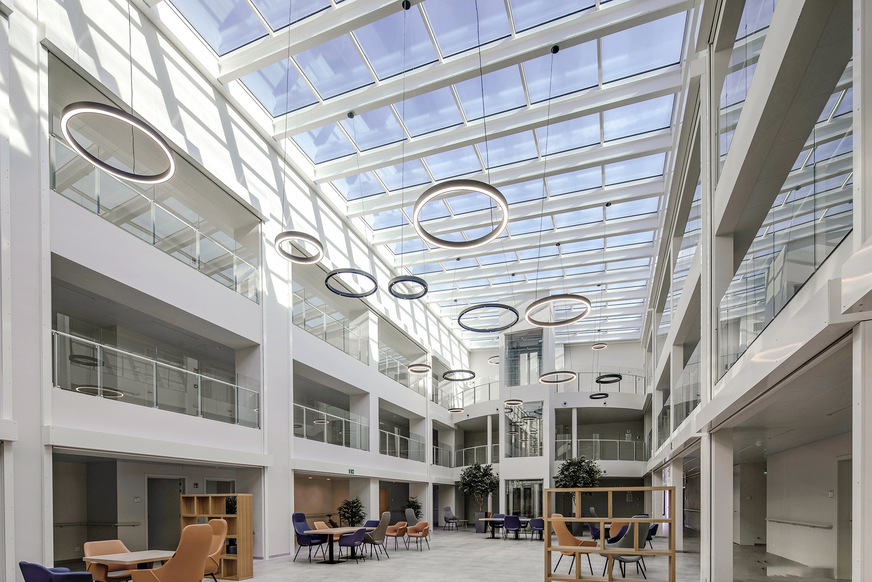
Halio International
Read also: This glass makes you recover faster
But never forget: The main purpose of a building is for people to feel comfortable in it, not for it to be energy efficient. Restricting the possibilities of the users is not an appropriate way, not even for developing new markets. If the building ‘knows’ how people use it and what their preferences are in terms of indoor climate, it can respond accordingly.
It is therefore important to increase comfort and save energy at the same time by using suitable detection systems and not excessive building automation. Glare protection and daylight utilisation are essential components of well-being.
This is what facades will have to achieve in the future
Until now, it has been difficult to harmonise the physical requirements of a building. The more complicated aspect, however, is the user. The decisive factor is not the product performance as such, but above all simple control systems (preferably adaptive and self-learning) which, in the context of all structural requirements in buildings, capture the changing requirements of the users and have little need for regulation.
The focus of the current research is on active and adaptive systems that interact with their users and their environment in a targeted manner. The buildings of tomorrow will differ significantly from today's rigid and passive construction methods due to their interactive spaces and adaptable building envelopes. At the same time, active systems must become significantly more cost-effective and offer a high degree of design freedom and capacity for integration.
So far, this has only been partially possible for EC glass and therefore growth in the market has been limited. The new liquid crystal-based systems available on the market today offer new opportunities, as they have no fundamental technical limitations in terms of colour, size and design. The most important function here is a significant reduction in manufacturing costs.
Read also: All of the more common types of insulating glass
The development is in an exciting phase, as improved systems and new technologies are being used for the first time and there is a chance of gaining a market share of up to 10 per cent of the total world market in the next few years. Reason enough to address the topic in detail and to align product ranges and investments accordingly. Applications are not only interesting in the construction sector, but also for the railway, automotive and aviation markets as well as for cruise ships and cooling systems.
The customer does not buy a product, she or he buys a solution for a set of problems/needs, he buys benefits for use, saves energy costs and contributes to environmental protection. There is no question that smart glasses can replace the entire field of static glazing. This is the case if, on the one hand, they are generally applicable and allow a variety of architectural solutions and, on the other hand, have an attractive price.
Conclusion
The adaptive facade of the future generates, stores and distributes energy, has natural ventilation systems and is highly efficient in terms of energy consumption and resource use. This makes it sustainable and energy self-sufficient and thus also economically interesting.
The decisive factor for market penetration is not product performance alone, but above all the associated control system. The facade market of the future includes intelligent self-learning building or facade control systems. On the one hand, these will enable optimal user comfort in the context of all building physics requirements, and on the other hand, they will help reduce energy consumption (e.g. through optimised solar and thermal protection; reduction of air-conditioning and lighting costs) and thus contribute to a more sustainable use of resources in addition to reducing ongoing operating costs.
Did you know about the GW News newsletter?







